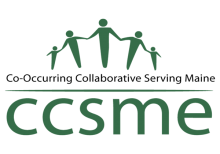Online Course Evaluation – How it works:
- Scroll down to Lesson 1 in Course Content and click on Course Evaluation
- After you complete and submit the evaluation, return here and click the Mark Complete button. You will be able to download and print your certificate.
Individuals with opioid use disorder (OUD) often intersect with the criminal justice system. Access to medications for opioid use disorder (MOUD) in correctional facilities has historically been limited. Individuals with OUD are at an increased risk of drug overdose death in the weeks following release from correctional facilities. Access to MOUD while incarcerated has been shown to improve outcomes and reduce recidivism post-release. Addressing the barriers associated with providing MOUD is critical in expanding access to treatment for incarcerated individuals.
Objectives:
• Review post-release outcomes in correctional facilities when MOUD is not available.
• Discuss barriers to implementing MOUD in correctional facilities and understand how treatment reduces the risk of overdose following incarceration.
• Describe outcomes associated with recovery and family treatment courts with a focus on one rural Maine alternative sentencing program.
• Understand the implementation and evaluation of an extended-release buprenorphine pilot for patients with OUD in a rural Maine jail.
